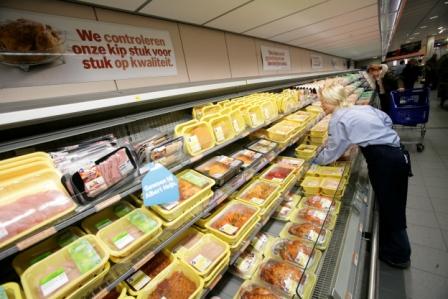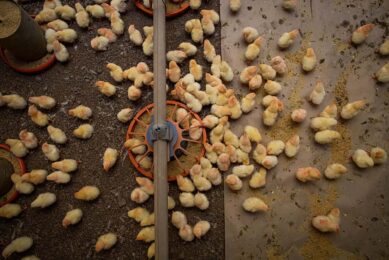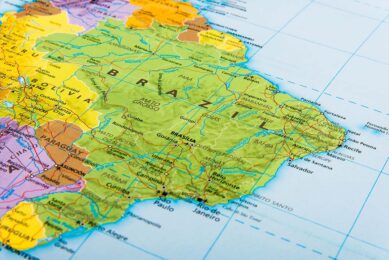European policy is hurting the poultry industry

Political decisions have resulted in many European poultry farmers losing ground on the global market. The list of regulations that cause increasing production costs – most of which relate to food safety, animal welfare and environment protection – seems endless. Will these matters eventually determine EU exports, while poultry meat and eggs will have to be imported?
By Wiebe van der Sluis
The return on poultry meat (fillets) remains a painful issue in the European poultry industry. The price is too low and the cost of feed too high to provide a decent income for poultry growers. Fortunately the dark meat market is positive and gives the balance a fair look. The industry is waiting for the barbecue season at which time the prices for most parts tend to become better.
Europe’s poultry industry used to be a strong and very competitive one, with powerful export footholds in various parts of the world. Those days have gone and have been replaced by a new order. The loss of export markets have partly to do with the rise of new players. Especially Brazil, with its low feed costs, and Thailand, with its low labour cost and favourite climate, have caused a dramatic change in global rankings. The EU, and especially some national governments in north western EU, have helped the intercontinental competition a lot by gradually increasing the cost of production through the introduction of an array of regulations. Most of these regulations and laws deal with food safety, the environment, and animal welfare.
High cost of production
In a recent report, the economic research department of Wageningen University in the Netherlands revealed that, due to relatively low feed costs, the poultry industry in the country has the lowest primary farm production costs of all European countries present in the 2007 comparison (Figure 1). Nevertheless, US producers were able to grow chickens 32% cheaper in that year, while the production costs in Brazil were 33% below the Dutch. Even Thailand had production costs that were 13% lower than in the Netherlands, although they had higher feed costs.
Besides the cost of feed and labour, the differences are often the result of day-old chick prices, but even more of the cost of housing, energy, manure disposal and other variable costs. In this respect, non-EU countries favour the lack of regulations and legislation comparable with those within the EU, which keep their production costs low. Factors that affect the whole poultry sector include the prohibition of the use of antimicrobial growth enhancers, meat-and-bone meal, and genetically modified (GM) grain in poultry feed in the EU.
Over the next few years more European and national legislation will come into force. They, too, will have a strong effect on the production costs of poultry meat and eggs. These regulations relate to food safety, animal welfare, and protection of the environment. The result, as can be seen in Figure 2, is that in 2012 the production costs in the Netherlands will have risen by over €0.017 per kg of live weight; in Germany, the increase will be €0.013. In the UK, there will be no increase, while in France the production costs will fall by €0.005 per kg of live weight. In Poland, the production costs will rise by €0.021, primarily as a consequence of measures aimed at reducing Salmonella contamination.
Lower bird density
In 2010, EU regulations will be introduced to regulate bird density permitted in broiler houses. Although this is a European measure, it will affect the Dutch growers the most as the average stocking density here is much higher than in other EU countries. In addition to density rules, broiler farmers in the EU will also be confronted with the EU Zoonoses Directive as well as with national environmental measures designed to reduce the level of ammonia emission.
The European poultry industry complies with strict measures to ensure that consumers receive safe poultry meat. The sector accepts the recently revised and updated strict criteria for overall food producer responsibility, food hygiene measures and microbiology, labelling of food, marketing standards, and training of staff. Although the costs incurred will be raised for all farms and processors, it is nevertheless expected that the related increases will be greater in most of the new member states. The Association of Poultry Processors and Poultry Trade in the EU Countries (Avec) supports the EU regulations aimed at guaranteeing safe and wholesome food, but is determined that those guarantees should also apply for meat imported from third countries.
Avec states that, with the present strict hygienic measures that apply at European farm level, there is no need to introduce the use of other substances than potable water for decontamination of poultry carcasses. The available figures of the level of poultry meat contaminated with Salmonella in the EU and third countries demonstrate that the current EU-control programmes in the production chain, without the use of these substances, produces better results than the programmes in third countries using antimicrobial carcass treatments.
The role of GM grains
Ambitious government targets on greenhouse gas emission savings due to the political focus on climate change have put pressure on feed prices through the diversion of feed crops into fuel. Feed prices soared in 2007/08 and remain at high levels because of the increased demand and low stocks. Long-term perspectives published by OECD/FAO expect prices to remain at a somewhat higher level (2008-2017) as the demand from the emerging economies will continue to grow.
The EU relies on Argentina, Brazil and the US for some of its grain supply. The EU poultry industry has urged the EU Commission to review its procedures for approving GM seeds. Only a few GM crop varieties are authorised in the EU and only seven countries in the EU grow GM crops. The Commission’s approval procedure includes risk assessment and risk management, and may take up to four years. Far quicker procedures in third countries means new GM varieties are approved and grown outside the EU long before being approved here inside the EU. With the increasing demand for food and feed grains from Asia, exporters from Brazil and Argentina will shift their focus to those markets that are less demanding where it concerns GM grain. The result is that the EU will be left with the more expensive grains and/or the leftovers. Avec considers this situation to be unsustainable, because the European poultry sector will no longer be able to supply enough meat from birds fed on non-GM feed ingredients to European consumers. In order to meet the demand, consumers will be faced with imported poultry meat from poultry fed on feed containing GM grains that are not approved in the EU. The worst case scenario drawn by the EU Commission predicts a 44% drop in European poultry production by 2010. This drop would have to be covered by imports from countries where the chickens have been fed non-EU-approved GM feed.
Future meat demand
If the worse case scenario would become true, the global meat sector will have to deal with some very complicated issues. Driven by world population growth and economic development, particularly in developing countries, the demand for meat will increase. Forecasts tell that until 2014 (Table 1) the growth for the poultry and pork sector (+2.0% per year) is only slightly higher than for sheep (+1.8%) and beef (+1.7%). This conservative estimation does not reflect the dynamic growth the poultry sector enjoyed over the past decade. Poultry displayed the largest growth of world consumption and production of all meat categories. On a global level, total poultry consumption and production (all species) increased from 66 million tonnes in 1999 to 83 million tonnes in 2006, corresponding to an annual increase of 3.2%. These results were attained despite recurrent consumer scares and regional trade restrictions linked to the spread of various diseases, such as the outbreak of avian influenza.
Consumption and production forecasts
In general, poultry consumption not only boomed in developing countries, but also showed, as the only type of meat, a significant positive trend in developed countries. Therefore, the increase in world poultry consumption was shared, contrary to beef and pig meat, more evenly among various countries: the US accounted for 15% of the global growth, followed by China (13%), Brazil (9%), the EU (8%), India (7%) and Mexico and Russia with 6%.
Considering the different size of the various markets, the highest annual growth rates of poultry consumption over the past 10 years were registered in India (+13.1%), Mexico (6.4%), Russia (+6.1%) and Brazil (+4.0%). These trends will not change dramatically in the years to come, making the role of the EU as a supplier weaker and vulnerable due to its growing dependence on imports of grains and meat (Table 2). Adding to this, the effects of the long list of EU regulations and directives as well as national laws, which will come into force in the upcoming years, the EU poultry sector will be facing higher production costs and loose its competitiveness. The future may become even a tragedy in case the EU Commission follows the aims of the WTO/Doha round and allows an unconditioned import of poultry meat and eggs from countries that do not have to follow the strict rules as set for the European producers.
The WTO/Doha round aims at developed countries to reduce their subsidies and their levels of agricultural protection to obtain in exchange better access to developing country markets for their (non-agricultural) industries. Within this context the terms of EU market access is most critical for the European poultry industry. The outcome of negotiations could mean, according to EU forecasts, that poultry meat imports to the EU in 2014 could be about 50% higher due to more stringent tariff cuts than the initial EU offer was foreseen.
Join 31,000+ subscribers
Subscribe to our newsletter to stay updated about all the need-to-know content in the poultry sector, three times a week. Beheer
Beheer








 WP Admin
WP Admin  Bewerk bericht
Bewerk bericht